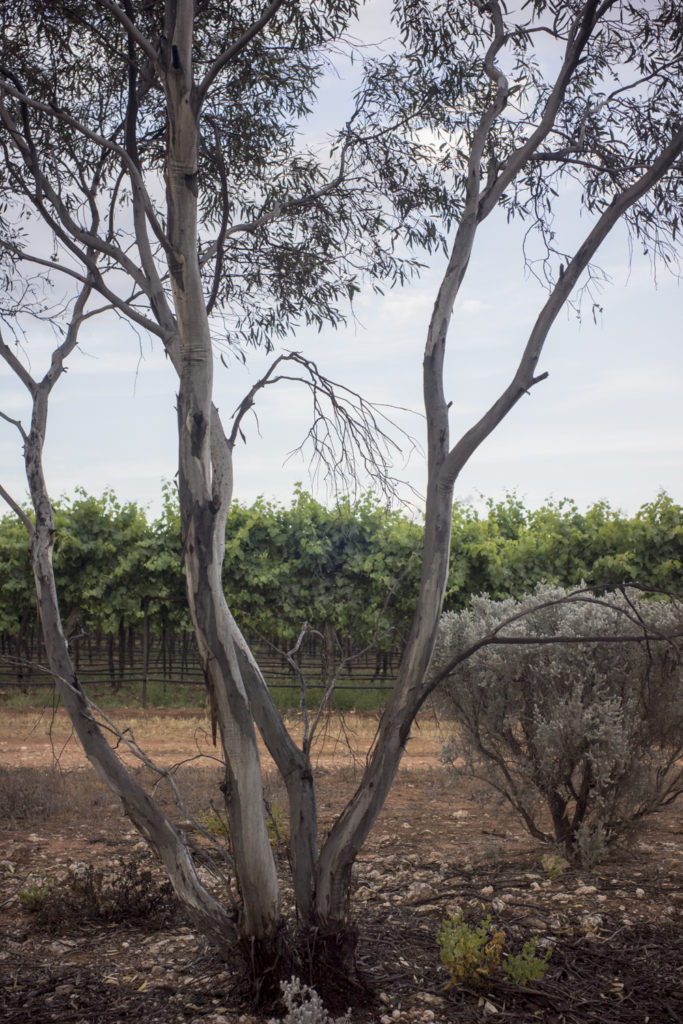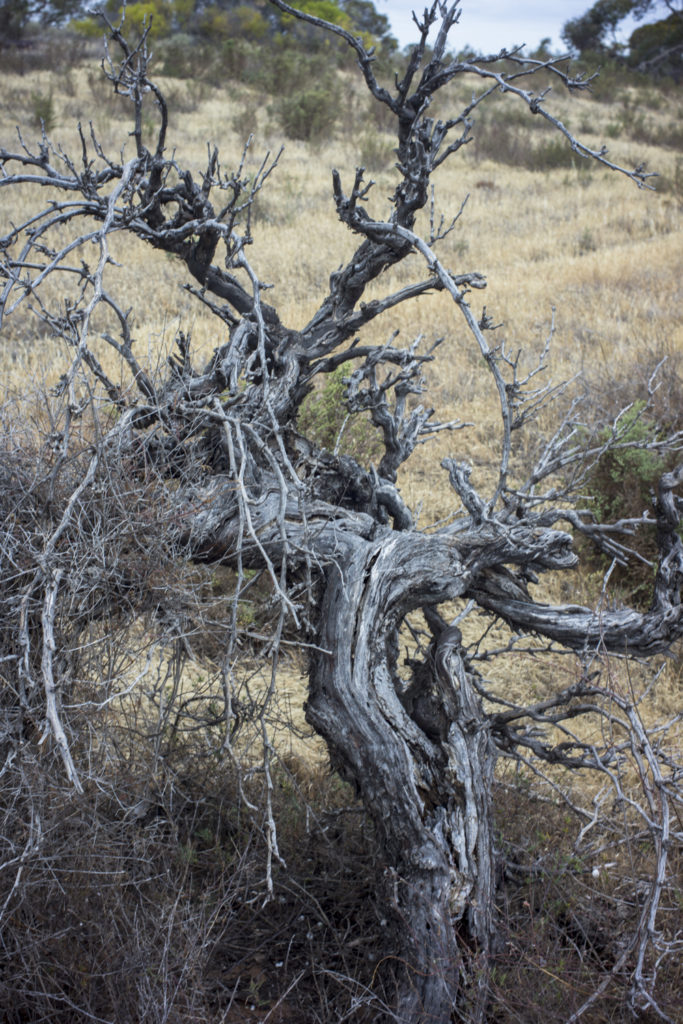When I was at the Morgan photo camp with Gilbert Roe in early November I noticed that the stretch of land around Morgan and Waikerie was increasingly being transformed by the ongoing clearing of the original mallee scrub and its replacement by irrigation in the form of irrigated agriculture. This is a landscape is one of red sands, the Murray River and gum trees and the horticultural crops now being grown appear to be primarily critus fruit (mandarins and oranges) and vines. It is an extensive transformation of the land.
This transformation is an indication of the ongoing history of the continual clearing of the Mallee scrub in this region. From what I can gather it started when soldier-settlers returned from World War I and grew grenache and palomino grapes for the big wineries to make generic sherries and ports. In the 1960s and ’70s, the emerging Australian thirst for table wine required huge quantities of sweet white gordo and sultana grapes to fill flagons and casks of fruity moselle. Through the 1990s and early 2000s it was sunshine-in-a-glass chardonnay and shiraz exported to the supermarkets in the UK in bulk.

Even though this part of the South Australian mallee is above Goyder’s Line, the extensive irrigation based on the extraction of water from the River Murray overcomes the lack of rain. The water for irrigation is based on a water entitlement (calculated based on crop area and crop requirement) with the total usage capped by State legislation. Any expansion comes from either buying up properties or water trading. The region has a high vulnerability and high dependence on water whilst the community has limited options and a low ability to cope with a reduction in water allocation.
The irrigation pumps were everywhere in this region, and they are privately owned. From what I could see most of the vineyards were drip irrigated. There is a high exposure of the industry to an export market for bulk wine, and this kind of land use requires that the costs of production be kept low. The last decade has been one of oversupply, poor grape prices, low quality wine and an income source for growers that was less than the cost of production–the legacy of the rapid planting that took place between 1995-2005.

The pumps along the bank of the River Murray at Moorook were old, and they suggested a history of irrigation that reaches back to the 1890s. This is a history that is also marked by dead river gums caused by taking too much water from the Murray River for irrigation. The area has also suffered from high river salinity in the past whilst future climate change is projected to ensure an underlying climate trend in the Riverland is one of hotter summers, more heat spikes and extreme weather events and earlier harvests. This pretty much means a reduction in suitable growing area with grape quality also reduced.
Historically, the Riverland region has been dependent on heavy growth in the low end of the market–‘low cost, low quality wine’. The wineries inform the growers in the region to grow as much as they can, take what they can get from the wineries, never talk about quality, never mention the word flavour. To compensate for the poor returns per tonne, many Riverland growers are cropping at ever-higher levels, which reduces quality, meaning the fruit slips further down the grading scale. A depressing vicious cycle.

The fore mentioned conditions indicate that the region is not sustainable for the region to be trying to produce the world’s cheapest wine. The region is totally unsuited to producing D-grade bulk wine—ie., low cost, low quality wine for supermarkets–-its uneconomic. The Riverland region will be unable to compete in the future with countries such as Chile and Argentina with their lower costs of wine production. So producers will need to move away from producing cheap supermarket booze towards premium, higher quality and higher cost wines from 40 year old wines.
The landscape south of the irrigated region quickly reverts to dryland farming, grazing land and saltbush. It is hot, dry and dusty with the land being underlain by saline groundwater. The capacity for dryland agriculture to transform to different commodities is low as rainfall is insufficient or marginal for dryland farms.


[…] have previously written about water and the Mallee here and here and here. The history of water in the 20th century was one of piping water to the […]
[…] will continue the focus on water and irrigation as I want to combine the Mallee photo camps with making photographs for the Our Waters […]